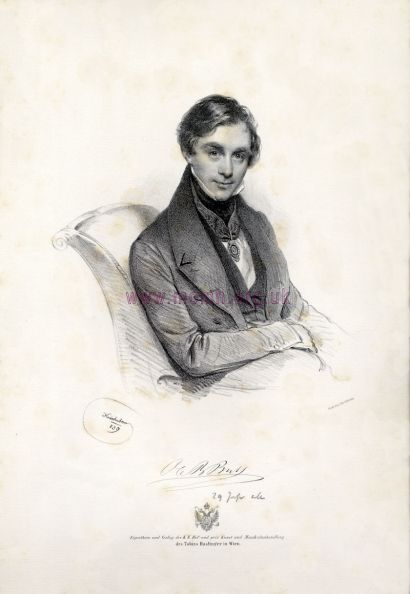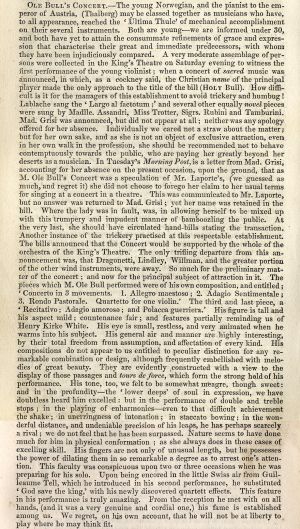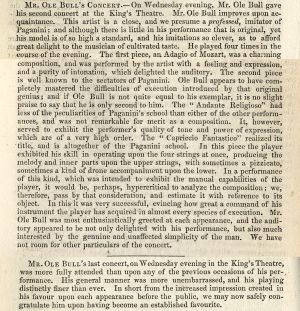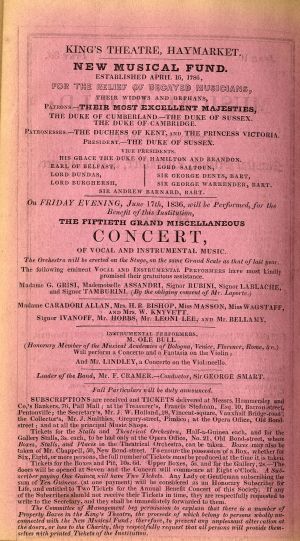Exhibition
Ole BULL (1810-1880)
July 2010
(b.Bergen, 5 February 1810; d.Lysøen nr Bergen, 17 August 1880).
Bull, the 200th anniversary of whose birth falls this year, is remembered not only as a legendary violinist but also as a key figure in Norway’s cultural and musical development in the 19th century. An arresting and colourful personality – “quite a figure for a book”, according to Thackeray, while George Sand did indeed model a character on him – he developed a highly individual playing style which fused the classical schools of Viotti and Baillot with folk techniques associated with his native Hardanger fiddle. Adoption of the latter instrument’s low bridge and round, heavy bow enabled him to achieve extraordinary polyphonic effects and to play in 4-part harmony. Rated as Paganini’s successor and virtual equal, Bull enjoyed continuous success in Europe and North America in a career lasting nearly 50 years. He also found time to open a Norwegian Theatre in Bergen (giving valuable early encouragement to Ibsen and Bjørnson), to work towards the establishment of a national conservatory, and to found a (short-lived) Norwegian colony in Pennsylvania.
This portrait by the distinguished lithographer Josef Kriehuber was published at the time of Bull’s Vienna debut in 1839. The first of his concerts there was said by Schumann to have been the most brilliant of the entire winter season and to have set a new standard in violin playing.
His London debut three years earlier had been scarcely less successful (and followed by a 14-month tour of the UK). Notices from The Musical World of his solo concerts in May and June 1836 are shown below. He also played at the Philharmonic Society and for the New Musical Fund.
1-3. The Musical World, 27 May, 3 & 17 June and 3 June (back of wrapper), 1836.






